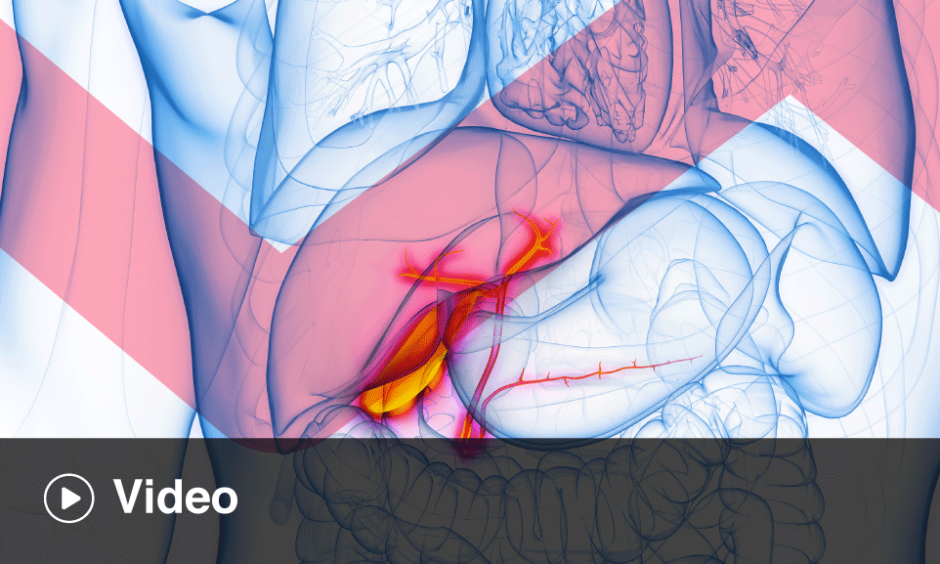Loreta Kondili | EASL Policy and Public Health Committee Member; Istituto Superiore di Sanità, Rome, Italy
Citation: EMJ Hepatol. 2024; https://doi.org/10.33590/emjhepatol/PVAV6427.
![]()
What originally led you to a career in gastroenterology and hepatology, specifically focusing on digestive endoscopy?
I first graduated from the Faculty of Medicine at the University of Tirana in Albania. My career started with my thesis, which studied the clinical and epidemiological profile of chronic liver disease in Albania compared to other neighbouring countries like Italy and Greece. Following my degree in Medicine and Surgery, I earned a scholarship at Istituto Superiore di Sanità (Italy’s National Institute of Public Health), one of the most important research institutes in Italy. This was the time when hepatitis C infection was discovered; there was a lot of fascinating research work like the detection of the virus in different populations, including those with chronic liver disease of unknown aetiology and paediatric populations, as well as virus genotyping and sequencing. Working in the field of hepatitis viruses, and trying to interpret the virological data on different clinical contexts and implications, served as the main driver for my decision to specialise in gastroenterology and digestive endoscopy, with the main focus on chronic liver diseases.
You are the Principal Investigator of the Italian Platform for the Study of Viral Hepatitis Therapies (PITER), and work with many other international networks. What do these positions mean for your own work, and how do you use them to further hepatological research?
The PITER is a structured network that benefits from an integrated endeavour involving Istituto Superiore di Sanità, the Italian Society for the Study of the Liver (AISF), the Italian Society for Infectious Diseases (SIMIT), and their affiliated clinical centres. PITER represents a collaborative effort to improve the understanding and management of viral hepatitis in Italy, aiming to reduce the disease burden and improve patient care.
Being the principal investigator of PITER gave me the great opportunity to collaborate with medical doctors and researchers of around 100 clinical centres all over Italy. I also coordinate the work of a fantastic team at the Center for Global Health of Istituto Superiore di Sanità, comprising dedicated researchers from different specialties like epidemiologists, biostatisticians, biologists, data managers, and several members of the administrative staff. The idea of creating a network for chronic liver disease treatment was first put in place with the arrival of drugs with direct antiviral action against chronic hepatitis C infection. In Italy, there was a great need for them because the prevalence of hepatitis C, and mortality due to hepatitis C, were the highest in Europe. The evidence produced by PITER served as an extremely helpful tool for the policy-making process for the universal treatment of patients with chronic hepatitis C, and hepatitis C virus mass screening, which are health policies put in place in Italy to achieve the World Health Organization’s (WHO) target of eliminating viral hepatitis as a public health threat by 2030. PITER expanded its work also on hepatitis B and Delta in 2019, and the well-established network is fostering a successful collaboration in the field of metabolic disfunction-associated liver disease, which is becoming a new epidemic disease worldwide.
I am very proud of this nationwide experience, which is also recognised at the international level, thanks to over 100 high-level research publications mainly in the public health field. I am also lucky because I have the possibility to extend the benefit of this experience at the European Association for the Study of Liver Diseases (EASL) as a member of the EASL Policy, Public Health and Advocacy Committee (PPHAC) since 2022.
What are the current priorities for the EASL Policy and Public Health Committee?
One of the main EASL missions is fostering a unified approach towards tackling chronic liver disease and those which are preventable on a global scale. To reach this goal, EASL has built collaborative initiatives through the PPHAC, bringing together stakeholders from various sectors to address chronic liver disease comprehensively and holistically. This work will be continuously improved by engaging different stakeholders, and working with coalitions and partnerships. There are several priorities for the committee, like focusing on a wide range of public health and advocacy work, promoting public health initiatives across Europe. The work of the committee is focused on both policy influence and public health improvement. Key aspects of its mission include advocacy for liver health policies that support liver disease prevention, diagnosis, treatment, and research at the international and national levels, collaborating with several main stakeholders. The committee also works in public health promotion through awareness campaigns and prevention programmes. Another important field of work for the committee is research, education, and training through wide network collaboration.
How do you hope to see EASL’s policy and public affairs improving in the future?
I strongly believe that the work of the committee will be reflected in the new health policies of the European Union (EU) countries. Hopefully, the work of the committee, which addresses increasing awareness about chronic liver disease, inequities in chronic liver disease and liver cancer care, actions against harmful alcohol use and for a healthy liver, actions focused on migrants’ health, and reducing stigma and discrimination in people affected by liver diseases, will be prioritised and reflected in the EU and national health policies, prioritising specific evidence-based policy actions.
Your own policy and advocacy efforts revolve around improving evidence-based health policies for reducing the chronic liver disease burden. Can you tell our readers more about this, and how you hope EASL may further this goal?
I think it is important to produce evidence through thorough, well-designed research conducted in specific areas of chronic liver disease focused on answering policy questions. It is important to ask for policy changes, but also to establish evidence-based recommendations for prevention, diagnosis, and treatment. It is necessary to produce data which shows that the required policy actions will produce real-life public health benefits. The implementation of chronic liver disease policies across Europe will only be possible with valuable data that guides policy changes. Case investment in the context of chronic liver disease, in terms of the comprehensive allocation of resources towards the management and care of patients with chronic liver conditions, should be promoted, and presented to the attention of different stakeholders at the EU and national level. It is also important to produce evidence on various aspects of healthcare, aiming to improve patient outcomes, enhance quality of life, and reduce the overall burden of chronic liver disease on the healthcare system at national and EU levels.
Through this vision, EASL will significantly impact liver health policies, advocating for comprehensive, evidence-based approaches to prevent and manage viral hepatitis, and harmful alcohol use-related metabolic dysfunction-associated liver disease, ultimately aiming to reduce the global burden of liver disease.
You also work with the Italian Ministry of Health on eradicating hepatitis in a cost-effective way. What developments in this area have you found particularly impactful?
A strong political commitment has been put in place since the arrival of drugs that eradicate viral hepatitis C in Italy. Thanks to the real-life PITER data, we evaluated the cost-effectiveness of the universal therapy of chronic hepatitis C with direct-acting antiviral drugs. This evidence served policymakers to approve the universal treatment at the beginning of 2017. Treatment with direct-acting antiviral drugs was made available not only for patients with advanced liver disease but for all the diagnosed patients with chronic hepatitis C infection regardless of the disease severity.
To achieve the WHO hepatitis C elimination targets in 2030, the screening of hepatitis C infection has been approved by law in Italy with dedicated, specific funds. This was made possible thanks to the political commitment supported by several evidences produced by the collaboration of PITER with the Polaris Observatory of the Center for Diseases Analysis Foundation, Colorado, USA, and the Center for Economic and International Studies (CEIS) of the Tor Vergata University of Rome, Italy. I am proud to have contributed, as senior clinical researcher and principal investigator, to producing this important evidence that helped the Italian Medicines Agency and the Ministry of Health to implement important public health policies aimed at elimination of hepatitis C as a public health threat in Italy.
At EASL, you chaired a session on inequities in liver cancer, and later gave a talk on the same topic. Could you expand a little on the inequities in liver cancer today?
Addressing health inequities is at the top of indications of the EASL-Lancet Commission on liver health in Europe, which indicates steps for the prevention, case-finding, and early diagnosis to reduce liver-related mortality.
Between 1990–2015, liver cancer incidence increased by 75% worldwide, and is expected to grow dramatically by 55% over the next 20 years if prevention strategies are not promoted. Inequities in liver cancer are determined by social determinants of health (SDoH). SDoHs have an interacting role in each step of the liver cancer pathway, impacting its development and the whole care cascade from the distribution of risk factors to incidence rates, as well as medical care, survival, and mortality. In particular, vulnerable and marginalised populations with a low socioeconomic and educational level are the most affected by liver cancer risk factors. Reasons for this include varied access to hepatitis B virus vaccination, limited access to viral hepatitis B and C screening, harm reduction, and treatment. Alcohol-related liver disease remains highly prevalent among individuals with low education, insecure employment, economic instability, migrants, and deprived populations. Significant variation exists across Europe in the proportion of adults with steatotic liver disease, overweight/obesity, and diabetes based on geographical area, gender, socioeconomic, and educational background, and density of ultra-processed food outlets.
Liver disease care worsens in the most socioeconomically disadvantaged regions. Insufficient healthcare access for key populations with primary liver cancer is influenced by complex healthcare systems, stigmatisation, discrimination, low education, language barriers, and fear of disclosure.
Activities essential for the integration of social needs into liver cancer health policy are awareness, adjustment activities aimed at tailoring care to overcome social barriers, and activities of assistance at the individual level. These include connecting patients to social care resources outside of the healthcare system and community-level interventions, organising social care assets to facilitate synergies and advocacy, and working with social care organisations to promote new policies. It is also important to promote and advocate for preventive measures, and raise public awareness about liver cancer risk factors, empowering individuals with knowledge and encouraging healthy behaviours.
Liver health should be part of a general health policy that considers the role of SDoH. Future studies are needed to explore the different SDoH-interlinked effects on liver cancer incidence and outcomes in the European countries. The ultimate goal is to develop evidence-based multilevel public health interventions that reduce the SDoH impact on precipitating and perpetuating the disproportionate burden of liver cancer in specific populations.







